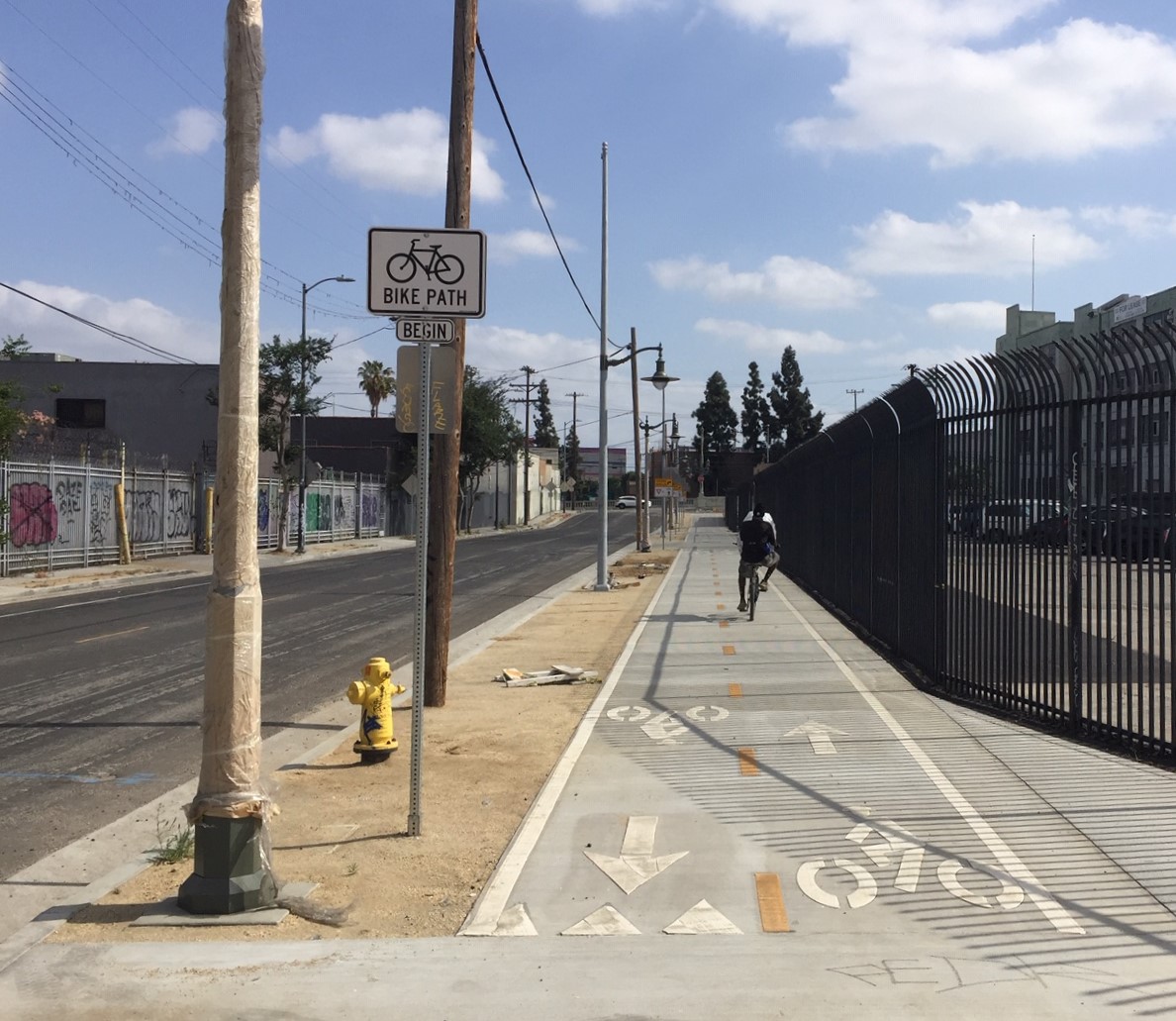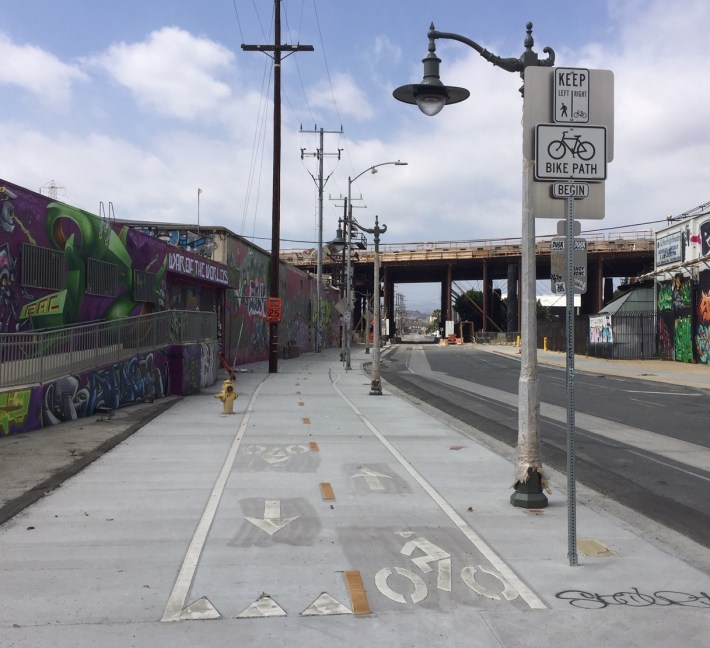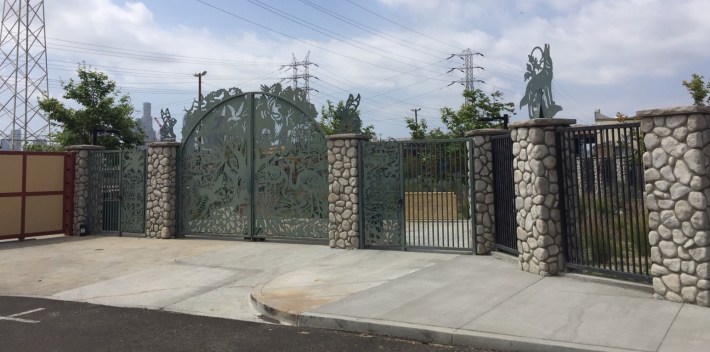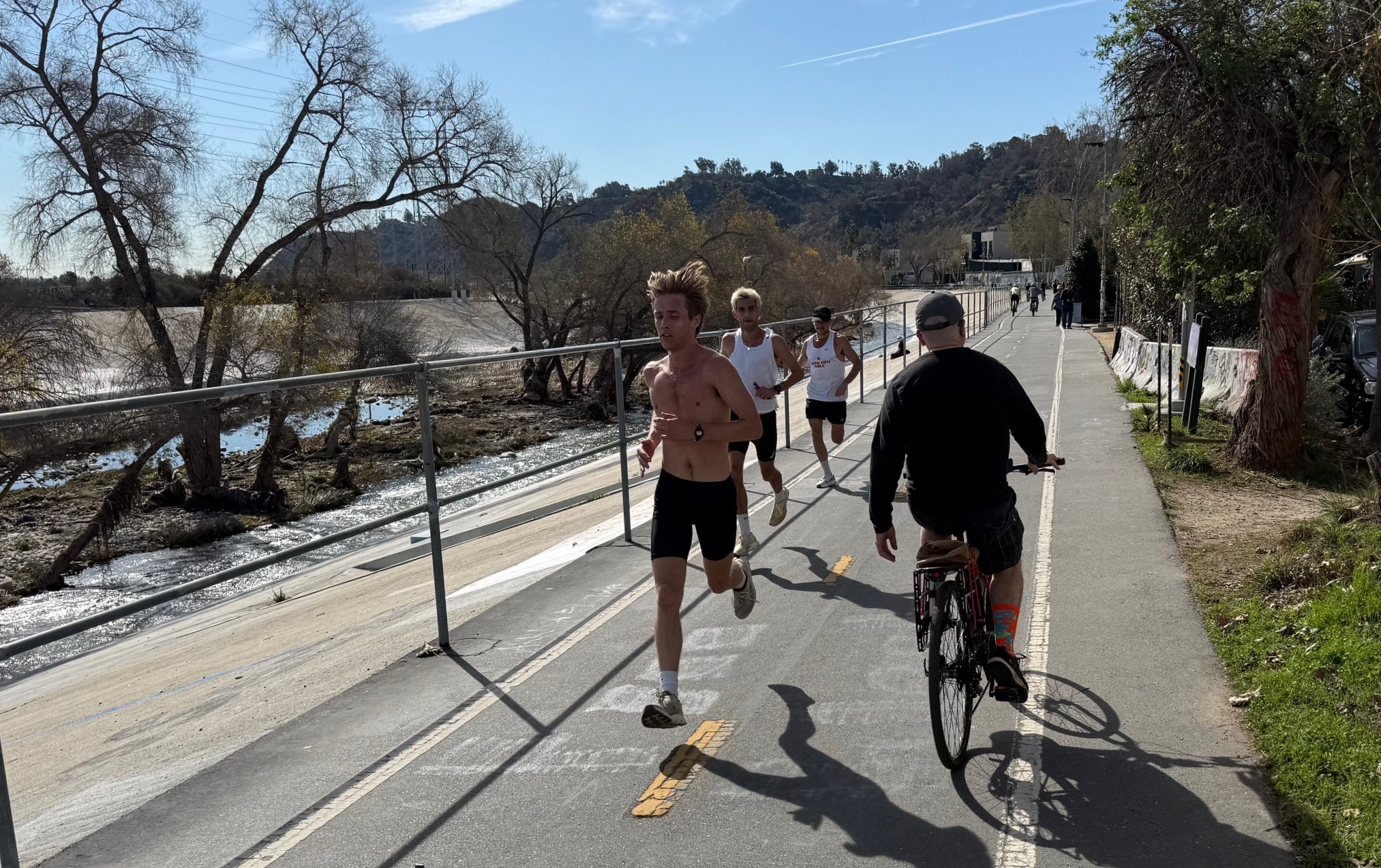Last weekend, Streetsblog spotted a couple of short new sidewalk bike path segments open in an industrial area along the river in Boyle Heights. The two paths are part of the Sixth Street Viaduct Mission/Myers Roundabout Project; they will connect to the planned 12-acre Sixth Street PARC (Park, Arts, River and Connectivity Improvements) Project to be located below the under-construction replacement viaduct.


One path runs about 500 feet along Myers Street between Jesse Street and 7th Street.
A second nearby path runs about 300 feet along Mission Road from Jesse Street to 6th Street (the bridge that Mission goes under.) The paths' concrete pavement, striping, and pedestrian lighting (still to be unwrapped) appear complete.
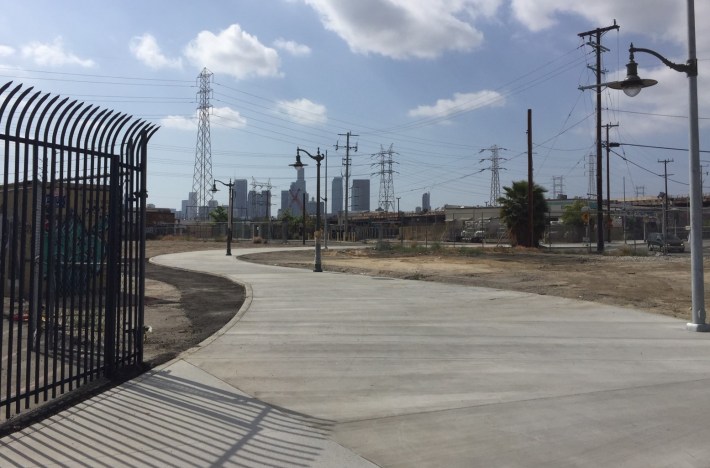
The two short paths are connected by a wide curved sidewalk, for a total bicycling distance of about a quarter mile.
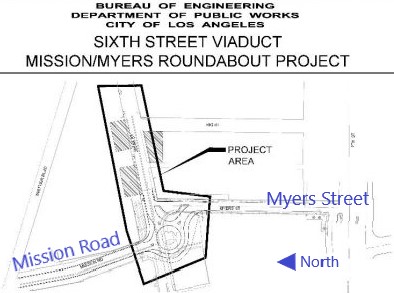
In between the two paths - at the intersection of Myers, Mission, and Jesse - the city will construct a new traffic circle replacing two T-intersections. The street level improvements had been part of the viaduct replacement mega-project, but were split off. The bike and pedestrian improvements were funded under the initial round of state Active Transportation Program (ATP) grants (see project list). The roundabout was funded via Metro ExpressLanes Active Transportation project funding (see the Round 2 project list).
Just east of the coming roundabout, the city has already completed its Jesse Street Air Treatment Facility (ATF), which cleanses air from a city sewer deep underground. The ATF includes a small fenced green space that borders the train tracks along the L.A. River. The pocket park was included in the ATF project as an early component of the city's plans to revitalize the river, though today it is off-limits to the public, and, like most surfaces in this vicinity, heavily tagged.
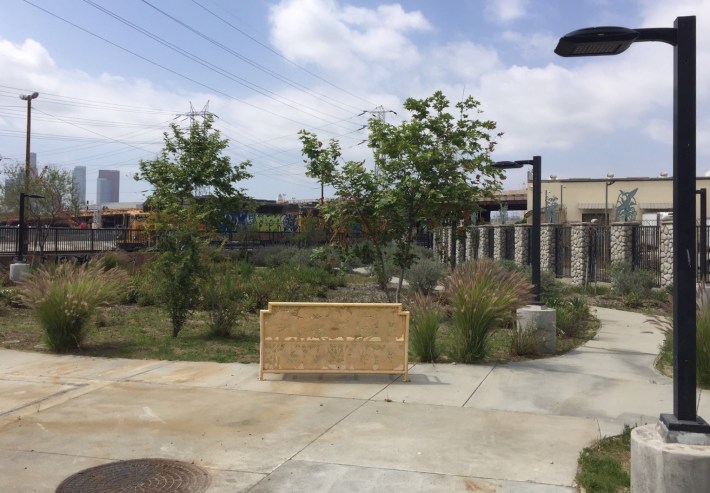
The new paths feel out of place with their older surroundings. In such an industrial area, with such short segments unconnected to a bikeway network, the new paths serve few cyclists today. With construction of the new viaduct and park below it - and the area's gentrification driving more changes including some conversion of industrial spaces to loft housing, these paths will serve new destinations in the future. The question is whether they will be able to get current Boyle Heights residents to their new park.
